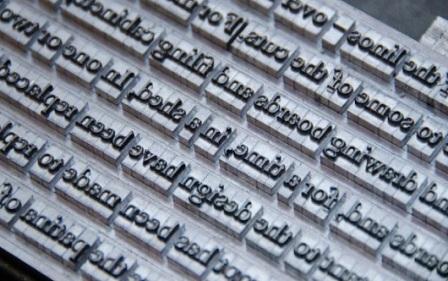Psychology of Fonts
 The choice of fonts used in e-mails and type-written letters could say more about an individual’s personality than their creative writing skills. Psychology of fonts is a specialized subject and dealt by handwriting experts. A certified handwriting expert undergoes the required training and certification in the science of Graphology. Graphology– the science of analyzing handwriting – has been used for centuries to try to analyse people’s characters, and now the experts in graphology have moved on to typefaces to look for clues to our identities. Choice of font could prove important when writing a letter to your bank manager or a spurned lover.
The choice of fonts used in e-mails and type-written letters could say more about an individual’s personality than their creative writing skills. Psychology of fonts is a specialized subject and dealt by handwriting experts. A certified handwriting expert undergoes the required training and certification in the science of Graphology. Graphology– the science of analyzing handwriting – has been used for centuries to try to analyse people’s characters, and now the experts in graphology have moved on to typefaces to look for clues to our identities. Choice of font could prove important when writing a letter to your bank manager or a spurned lover.
Research department at Handwriting Analysts International has conducted a study on the psychology of fonts. Along with the emotional impact of fonts we were convinced that they have a greater impact on people than may seem evident. The choice of a font will tell you how you’ll react emotionally to the information before you’ve even read it. It’s an invisible level of communication. It’s to do with context, association and memory.
From the view point of experts in psychology of fonts here is an example: If you advertise your construction company using a flimsy-looking font with squiggly lines, then the message you’re trying to convey doesn’t match the message your font belies. People won’t see the font as representing your company well, and may not be interested on that basis alone. On the other hand, if you use a large, powerful-looking font with a strong structure, you match the message the font communicates with the information you want to convey through the printed words.
According to a survey recently conducted by H.A.I on 300 children, “99% of them simply don’t notice fonts at all.” But adults have had time to develop font memories and prejudices. In the cut-throat grown-up world of work, you’re likely to have your CV rejected within 30 seconds if your prospective boss doesn’t like the look of your typeface.
And, as February 14th approaches, be warned. Love letters are apparently very font-sensitive. Don’t write them in fonts reminiscent of government documents, bills or letters from the Inland Revenue, and, unless you want to look like a sad fop, avoid Comic Sans at all costs.
Fonts have a greater impact on people than may seem evident. A font can go a long way toward determining what someone’s initial impression will be. Using the wrong font may give people the wrong impression about you and could affect decisions that will shape your future.
Size matters: Font size is also important, especially for power letters where less is definitely more and a smaller typeface is preferable.
Applying for a new job? Then choose Times for your CV for a traditional company and Verdana for a more contemporary firm. Use Courier New for “automaton-like” coldness, perhaps when resigning from a job on bad terms.
The study found rectilinear fonts were more appealing to men, while the more round and curvy fonts with prominent tails were favorites with women. Serif styles such as Times New Roman show a compromise between old and new, conjuring up images of trustworthiness that have made them a favorite of solicitors.
There is a huge opportunity for people to express themselves through font style, which people should exploit more fully.
Did you know that you could learn handwriting analysis(graphology) without leaving your home?
The H.A.I offers certification courses in handwriting analysis through distance learning mode with online support mainly to working professionals that don’t have time for lengthy residencies. The coursework can be challenging. However, a certificate from a prestigious graphology organisation can make your resume stand out from the crowd. To learn handwriting analysis visit www.hai.in


